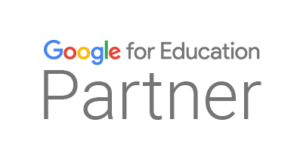Schools today depend on digital infrastructure more than ever. From smart classrooms and online exams to cloud-based administration tools, a reliable and secure network is the invisible backbone that keeps everything running smoothly. Yet many schools do not realize how fragile their systems are until something goes wrong. Slow Wi-Fi, unexpected downtime, or even a cyberattack can bring learning and operations to a halt. This is where a technical audit becomes essential. A network security audit helps schools uncover hidden gaps in Wi-Fi coverage, security, and performance before those problems disrupt daily life.
Connected but Vulnerable
Classrooms are becoming more digital every year. Teachers use online tools, students submit assignments through portals, and even examinations are shifting to secure online platforms. This growing dependence means the stakes are higher when networks fail. A dropped connection during an exam, for instance, can cause unnecessary stress for students and staff. Downtime also means classes lose valuable teaching time, leaving teachers scrambling to adjust lesson plans.
The risks are not limited to connectivity. Security threats are increasing across the education sector. Student and staff data is highly sensitive, making schools a prime target for ransomware, phishing, or data theft. Without strong protective measures, a single breach can compromise thousands of records.
Performance risks add another layer of concern. Weak Wi-Fi coverage leads to constant disconnections. Overloaded networks struggle when too many devices are connected at once. In schools where students bring their own laptops, tablets, or phones, the strain on bandwidth grows quickly.
Which Schools Should Consider a Network Security Audit
Every school, regardless of size, can benefit from an audit, but the focus areas vary.
- Small schools often need validation of their Wi-Fi coverage and a check on whether their basic security systems are enough to safeguard sensitive information.
- Mid-sized schools face challenges as the number of connected devices increases. Bandwidth may no longer meet demand, which makes it important to test whether the network can handle heavier loads.
- Large schools require a full-scale review. This includes assessing firewall effectiveness, examining access policies, and ensuring devices across the network are properly managed. In such cases, an audit can also highlight whether the institution is compliant with education and data protection standards.
By tailoring the audit to the size and needs of the school, administrators can ensure resources are used wisely and that the results are truly actionable.
What the Audit Uncovers
A network security audit is more than a surface-level check. It digs deep into areas that often go unnoticed until they cause visible disruptions. Some of the most common insights include:
- Wi-Fi coverage gaps that leave classrooms or exam halls struggling with poor connectivity.
- Bandwidth utilization reports that highlight where bottlenecks occur and whether existing capacity matches student needs.
- Firewall and intrusion prevention performance to confirm whether external threats are being blocked effectively.
- Endpoint or device security gaps were unmanaged laptops, tablets, or smartphones could compromise the entire system.
- Compliance checks that show whether the school is meeting data safety standards required by education boards or regulations.
These findings form a clear picture of how the network is functioning today and where improvements should be prioritized.
Key Metrics to Track
Numbers help decision-makers understand performance better than assumptions. During an audit, several key metrics stand out as indicators of network health.
- Network uptime and reliability reveal how consistently the system performs without disruptions.
- Number of connected devices versus network capacity shows whether the school has outgrown its current infrastructure.
- Bandwidth availability per student or per classroom reflects whether learning activities can be supported without slowdowns.
- Latency and speed consistency highlight whether connections remain stable across the day.
- Security incidents detected or prevented demonstrate how well the system is protecting data in real time.
When schools monitor these metrics, they move from guessing to informed decision-making.
How Schools Benefit from Audits
The value of an audit becomes clear in the improvements it brings. Stable and fast Wi-Fi ensures that digital lessons, online assessments, and research activities happen without interruption. Teachers can focus on teaching rather than troubleshooting, and students enjoy a smoother learning experience.
Protecting sensitive data is another critical outcome. With audits revealing security gaps, schools can strengthen their defenses and prevent breaches that could otherwise damage trust and reputation.
Audits also make financial sense. Instead of overspending on unnecessary upgrades, administrators can direct budgets where they are most needed. Knowing exactly which areas require investment saves both money and effort.
Finally, audits give peace of mind. IT teams and administrators no longer have to wonder whether the system will hold up during critical periods. They gain confidence that their infrastructure is ready for the demands of modern education.
What This Means for Schools
A school’s network is too important to leave to chance. Technical audits provide clarity, uncover weaknesses, and highlight the right path forward. They protect students’ learning experience, safeguard sensitive data, and ensure that budgets are allocated effectively. Most importantly, they create a reliable and secure digital environment where education can thrive.
Know Where You Stand
Netoyed for Education helps schools strengthen their digital foundations with expert network assessments and customized recommendations. Our team conducts a free technical audit to identify gaps in connectivity, performance, and security without disrupting day-to-day operations. The result? A clear roadmap to faster, safer, and more reliable networks designed for modern classrooms.




 1st Floor, H-31, Sector 63,
1st Floor, H-31, Sector 63,